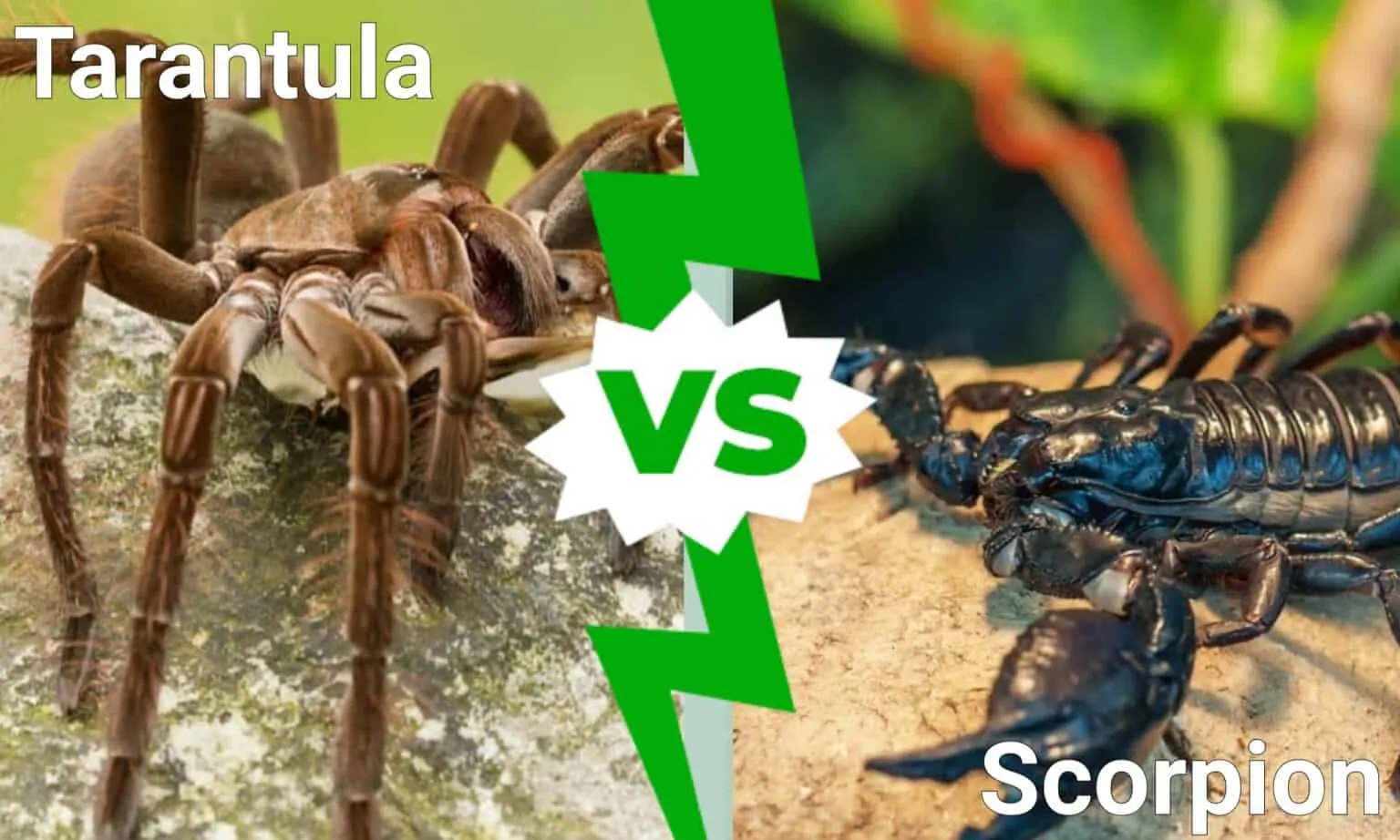Escorpion vs Tarantula: 5 Shocking Differences!
The natural world is filled with fascinating creatures, and among the most intriguing are arachnids like scorpions and tarantulas. These arthropods, with their imposing appearances and unique characteristics, often spark curiosity and, at times, fear. But how do these two formidable predators stack up against each other? This article delves into the key differences between scorpions and tarantulas, exploring their physical attributes, behaviors, and survival strategies. Prepare to be amazed by the contrasting worlds of these eight-legged wonders as we uncover five shocking differences that set them apart. This comparison will shed light on which of these creatures is truly the dominant force.
Size and Appearance
One of the most immediate distinctions between a scorpion and a tarantula lies in their physical appearance and overall size. While both are arthropods, their body structures and the way they present themselves to the world differ significantly. The scorpion, with its segmented body, distinctive pincers (pedipalps), and, of course, the iconic curved stinger at the end of its tail, has a unique profile. Tarantulas, on the other hand, typically have a more compact body with a hairy exterior and large fangs. Observing their physical traits gives us a first glimpse into the survival strategies they employ.
Escorpion Size

Scorpions vary greatly in size depending on the species, ranging from a mere inch to over eight inches in length. Their size also varies across different geographical locations. Larger scorpions often have a more robust build, particularly in their pincers and tail, reflecting their need for power to capture prey and defend themselves. The overall impression is one of a compact, armored predator, built for both agility and defense. Consider an escorpion’s size to be one of the deciding factors in a fight with a tarantula.
Tarantula Size
Tarantulas are typically larger than scorpions, and their leg span can reach up to a foot in some species. Their bodies are often covered in dense hairs, which serve various functions including sensory perception. Their size and imposing presence make them a formidable sight, and the sheer bulk of a large tarantula is a significant factor in its ability to overpower prey and deter predators. The overall size of the tarantula gives them the upper hand in any fight, so size is important. (image: tarantula-close-up)
Venom and Bite
The means by which scorpions and tarantulas incapacitate their prey differ fundamentally. While both possess methods for delivering a toxic payload, the specific delivery mechanisms and the nature of the toxins vary significantly. Understanding these differences is key to appreciating the unique survival strategies employed by each arachnid. The kind of venom and bite each animal has is what determines their method of catching prey.
Escorpion Venom

Scorpions are known for their venomous sting, delivered via a stinger located at the end of their tail. This venom is a complex mixture of toxins that affects the nervous system of their prey, causing paralysis. The potency of scorpion venom varies greatly depending on the species, with some being relatively harmless to humans and others being potentially deadly. This is an important factor to consider when comparing an escorpion vs tarantula in a fight.
Tarantula Bite
Tarantulas, on the other hand, use fangs to deliver their venom. The venom of a tarantula is generally less potent than a scorpion’s, and while their bite can be painful, it is rarely life-threatening to humans. Instead, the venom serves to subdue prey, and the tarantula often uses its large fangs to inject the venom deep into the body of its victim. The effect is designed to make the prey easier to consume, by liquefying the insides. (image: tarantula-close-up)
Hunting Strategies
The ways in which scorpions and tarantulas hunt and capture their prey offer insights into their adaptations and the environments in which they thrive. These strategies are shaped by their physical attributes, their venom delivery methods, and the specific types of prey they target. A comparison of these hunting styles highlights the diverse approaches that arachnids take to survive in their respective ecosystems. Their hunting methods vary widely based on the species and environment they live in. (image: escorpion-hunting)
Escorpion Hunting

Scorpions are primarily ambush predators, often lying in wait for unsuspecting prey. They use their pincers to grasp and hold their victim, while their venomous sting is deployed to paralyze or kill the prey. Their hunting success relies on stealth and precision, as well as their ability to quickly react to the movements of their target. Scorpions are also known to be opportunistic hunters, consuming anything from insects to small vertebrates that come within their grasp.
Tarantula Hunting
Tarantulas are also ambush predators, but they typically rely on their size and powerful bite to subdue their prey. They may wait patiently for a suitable target to come within striking distance, using their sensitive hairs to detect vibrations in the ground. Once the prey is within reach, they pounce, injecting venom and overpowering their victim with sheer force. Tarantulas feed primarily on insects, but larger species are also known to consume small vertebrates like lizards and birds. (image: tarantula-hunting)
Habitat and Environment
The environments in which scorpions and tarantulas thrive provide essential clues to their survival strategies and adaptations. From deserts to rainforests, these arachnids have evolved to occupy a wide range of habitats, each presenting unique challenges and opportunities. Exploring their preferred environments provides insights into their overall adaptability and resilience. Understanding the differences between the environments they live in is important when considering the escorpion vs tarantula debate.
Escorpion Habitat

Scorpions are found in a diverse range of habitats around the world, from deserts and grasslands to rainforests and even urban environments. They are often nocturnal, seeking shelter under rocks, in burrows, or beneath loose bark during the day. Their adaptable nature allows them to thrive in a variety of conditions, provided they can find suitable shelter and a reliable food source. The most common habitats include rocky areas with little vegetation. (image: escorpion-habitat)
Tarantula Habitat
Tarantulas are primarily found in tropical and subtropical regions, although some species have adapted to more temperate climates. They often inhabit burrows in the ground, under rocks, or within the vegetation. Their habitat preferences vary depending on the species, but they generally require a warm, humid environment to survive. The ability to find prey, hide away, and reproduce make their environment extremely important. (image: tarantula-habitat)
Lifespan and Reproduction
The lifespan and reproductive strategies of scorpions and tarantulas are crucial aspects of their long-term survival. These factors, combined with their unique characteristics, influence their populations and how they interact with their environments. Comparing the lifespan and reproduction of these arachnids reveals significant differences, reflecting their evolutionary adaptations and the challenges they face in their respective habitats.
Escorpion Lifespan

Scorpions have a relatively long lifespan compared to many other invertebrates. Depending on the species, they can live for several years, with some species living up to a decade or more in the wild. Their longevity contributes to their ability to establish stable populations and adapt to environmental changes. Their ability to live longer is helpful in the wild and helps them continue reproducing. (image: escorpion-close-up)
Tarantula Lifespan
Tarantulas, too, are known for their long lifespans, particularly the females. Some female tarantulas can live for over 20 years in captivity, while males typically have a shorter lifespan. Their slow growth rate and longevity contribute to their survival in their environments. A tarantula can live many years as long as they are safe and have food. (image: tarantula-close-up)
In conclusion, both scorpions and tarantulas are fascinating creatures with unique adaptations that allow them to thrive in their respective environments. While they share the common classification of arachnids, their differences in size, venom, hunting strategies, and habitat preferences showcase the remarkable diversity of the natural world. Whether you are captivated by the agility of a scorpion or the imposing presence of a tarantula, these creatures remind us of the intricate and awe-inspiring complexity of life on Earth. (image: escorpion-tarantula-fight)
